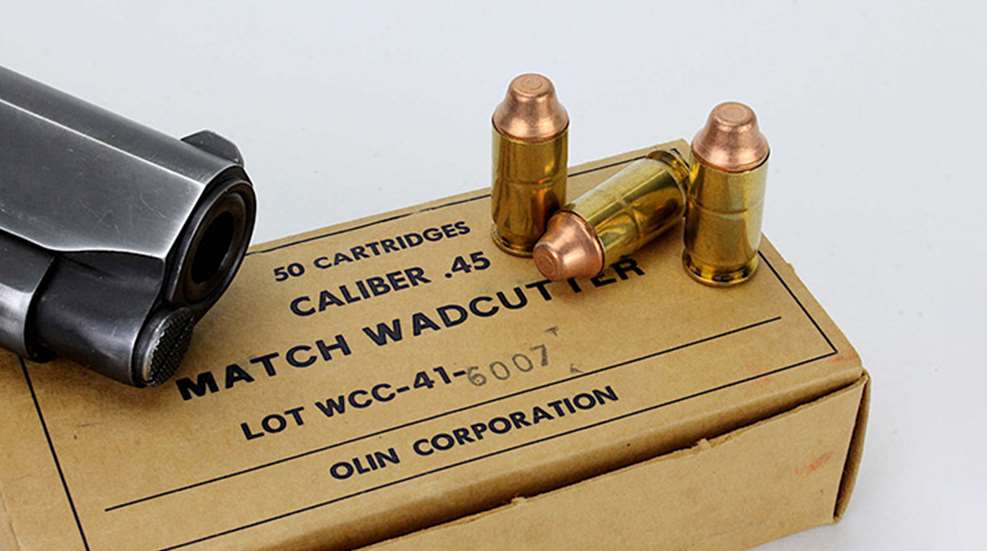
Formal bullseye target shooting with revolvers appears to have begun soon after the end of the American Civil War, coincident with the advent and improvement of self-contained metallic cartridges. For those who require absolutes, Smith & Wesson’s New Model No. 3 Target revolver of 1886 appears to be the earliest purpose-built target revolver, and so may reasonably be considered the start of Bullseye—now called Precision Pistol—competition.
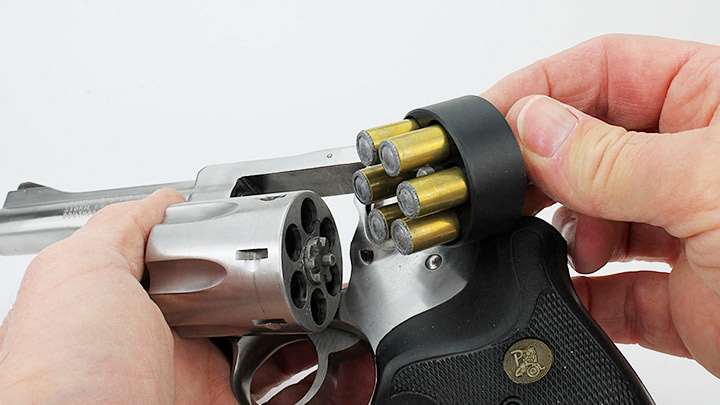
120 Years of Wadcutters
Without doubt, the single most popular choice among revolver bullets for Bullseye/Precision Pistol competitions is the wadcutter. You’ll find an interesting and detailed history of the wadcutter bullet in Chapter 11 of From Ingot to Target: A Cast Bullet Guide for Handgunners by Glen E. Fryxell and Robert L. Applegate. These gentlemen provide a free PDF copy of their 183-page book for fellow handloaders and shooters. In the aforementioned 11th chapter, the authors tell us the earliest wadcutter bullet was the Himmelwright wadcutter offered as an Ideal bullet mold in the year 1900. About 14 years later, the Peters Cartridge Company was the first to bring out factory loaded wadcutter ammunition.
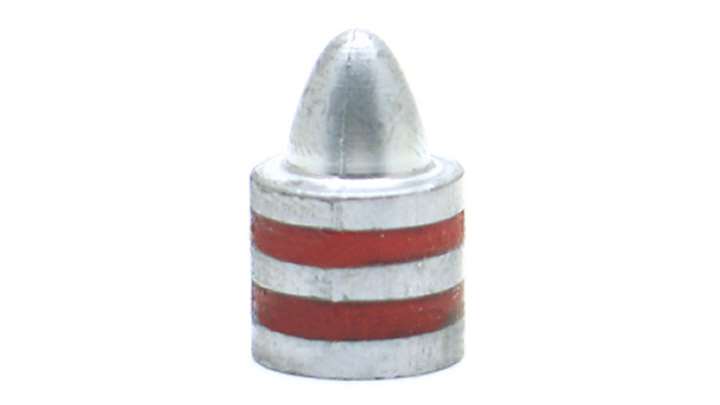
The wadcutter is likely the first bullet conceived exclusively for Bullseye target competition, the impetus being the sharp-edged holes it leaves in paper. The ragged holes typically left in paper targets by standard profile bullets can be difficult to score when they land close to a target’s scoring rings, and can cost bullseye shooters some points. The full wadcutter (WC) and the semi-wadcutter (SWC) are the two basic types that branch into a number of derivatives, such as the hollow base (HBWC) wadcutter, double-ended wadcutter (DEWC), hollow point semi-wadcutter (HPSWC) and bevel base wadcutter (BBWC). Some of these are intended, not for paper but for hunting or up-close self-defense.
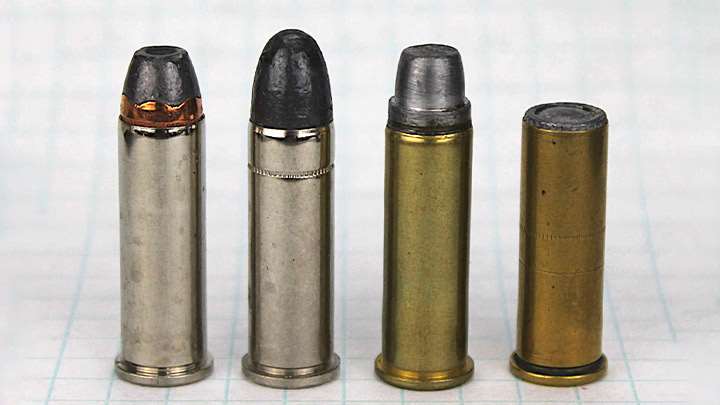
Cast vs. Swaged
While some competitors enjoy casting their own lead wadcutters, there is an advantage in buying factory swaged lead bullets instead—swaging does not leave any voids in the bullet that can cause inaccuracy and inconsistent bullet weights, as can happen with cast bullets. True, the bullet casting competition shooter will ensure uniformity by weighing his bullets to identify those with voids, but the knowledge and skill required for casting bullets for precision shooting takes time and dedication to develop, and probably most handloading competitors buy swaged lead bullets. Let’s spotlight a few wadcutter designs.
WC: Lead Cylinder
“Full” wadcutters are so-named to differentiate them from semi-wadcutters; the abbreviation, “WC” is generally understood to identify the full wadcutter. Lead full wadcutters are essentially lead cylinders ringed with lubrication grooves. Jacketed or clad (electroplated) WCs typically don’t have need of the grooves, though sometimes the noses may sport some manner of a crimping groove. Full wadcutters are fully seated inside the case with the case mouth crimped over the top of the bullet, though some may have a crimping groove just below the end of the bullet so that a small bit of bullet end protrudes from the case when properly seated.
HBWC
Hollow base wadcutters (HBWC) harken back to the Miniéball of 1848, designed for rapid reloading of a combat muzzleloading rifled musket. The Miniéball was not a sphere but a conical-shaped bullet made slightly under bore diameter to be rammed down a fouled bore without difficulty; the hollow base expanded upon firing, gripping the rifling which imparted spin, making the rifled musket more accurate than a smoothbore musket, and a tad faster to reload.
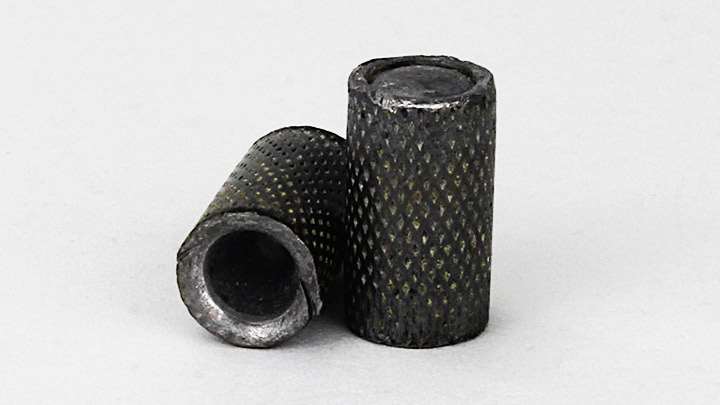
Similar in concept, the HBWC is full diameter rather than undersize à la the Minié. Theoretically, expanding combustion gasses fill the hollow base to keep it pressed tightly against the rifling to discourage the bullet “stripping” past the rifling, resulting in improved shot-to-shot consistency. Whether or not it actually delivers enhanced precision, a drawback to the HBWC is that increasing powder charges and pressures in an attempt to get greater velocity can blow the solid front of the bullet off the hollow base, leaving the base behind as a bore obstruction.
Some shooters load the HBWC backwards in the case, believing it creates a particularly effective hollow point bullet for self-defense.
SWC
Because semi-automatic pistols don’t reliably feed full wadcutters without being specifically made or modified to do so—the Smith & Wesson Model 52 comes immediately to mind—these guns require semi-wadcutter (SWC) bullets to get that paper target “clean hole” effect of full wadcutters. The .45 ACP cartridge in the Model 1911A1 pistol is a common example. The SWC bullet provides enough bullet nose to permit smooth feeding from magazine to chamber, while the flat meplat and sharp-edged ogive punch the clean hole.
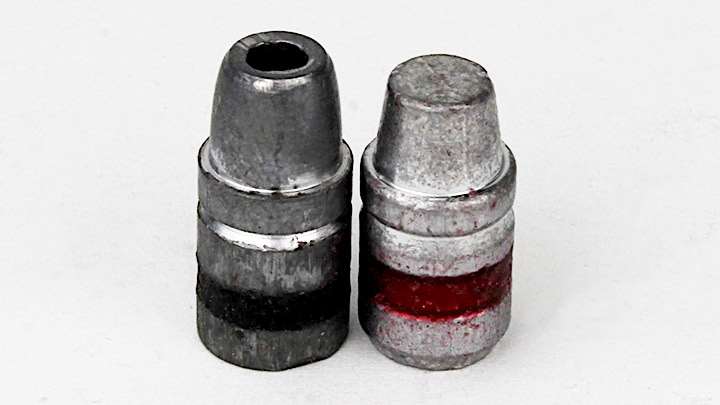
There’s no reason not to shoot SWCs in revolvers, and several reasons to do so. Chief among them is ease of reloading. WC loads present wide, flat surfaces that can cause a bit of fumbling when trying to insert or drop them into a revolver cylinder, especially when employing a speed loader, while noses of SWCs present some taper to guide cartridges into chambers. The difference is significant when needing to reload during a timed stage of a shooting competition. Secondly, the SWC has a somewhat better ballistic coefficient (BC) than the WC, and theoretically may perform better over distance. Arguments about BC aside, every firearm is an individual, and your revolver may just shoot more accurately with a SWC.
Wadcutter Sources
Matt’s Bullets in Arkansas is an excellent resource for cast lead wadcutters, with a variety of types available at reasonable cost in quantities as low as 100. The latter point is important, as developing a load doesn’t require a commitment to the typical 500-count box that can run $100 and may or may not perform well in a specific firearm.
Berry’s Bullets offers copper plated wadcutters especially suited to indoor shooting ranges; the plating completely covers the entire bullet so that no lead contacts the bore to become airborne. Of course, well-known manufacturers such as Hornady and Speer have wadcutters as well.
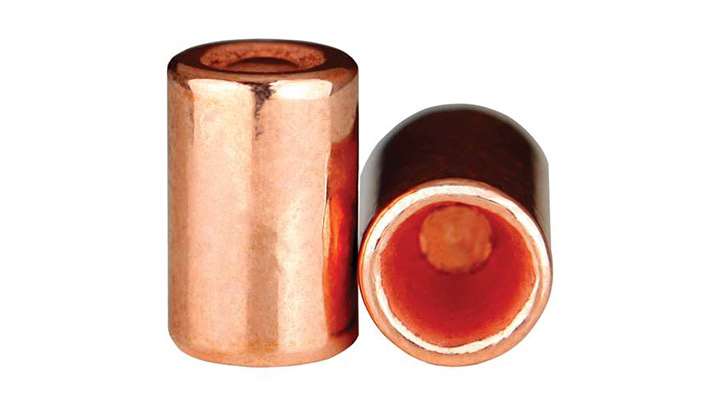
Not just for handloaders, there are plenty of choices in wadcutter loaded cartridges as well. Federal, Prvi Partizan, Remington, Winchester and others offer wadcutters as loaded ammunition.
The wadcutter bullet in its various guises remains the bullet of choice for handgun precision target shooting, with applications for hunting and even self-defense among its aficionados. For a glimpse into the history of target shooting and wadcutters, check out a free online copy of A.L.A. Himmelwright’s 1916 Pistol and Revolver Shooting.
See more: How To Lose At Dueling And Still Survive: Wax Bullets



































